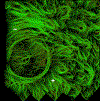Glaucoma and biomechanics
- PMID: 34954731
- PMCID: PMC8828701
- DOI: 10.1097/ICU.0000000000000829
Glaucoma and biomechanics
Abstract
Purpose of review: Biomechanics is an important aspect of the complex family of diseases known as the glaucomas. Here, we review recent studies of biomechanics in glaucoma.
Recent findings: Several tissues have direct and/or indirect biomechanical roles in various forms of glaucoma, including the trabecular meshwork, cornea, peripapillary sclera, optic nerve head/sheath, and iris. Multiple mechanosensory mechanisms and signaling pathways continue to be identified in both the trabecular meshwork and optic nerve head. Further, the recent literature describes a variety of approaches for investigating the role of tissue biomechanics as a risk factor for glaucoma, including pathological stiffening of the trabecular meshwork, peripapillary scleral structural changes, and remodeling of the optic nerve head. Finally, there have been advances in incorporating biomechanical information in glaucoma prognoses, including corneal biomechanical parameters and iridial mechanical properties in angle-closure glaucoma.
Summary: Biomechanics remains an active aspect of glaucoma research, with activity in both basic science and clinical translation. However, the role of biomechanics in glaucoma remains incompletely understood. Therefore, further studies are indicated to identify novel therapeutic approaches that leverage biomechanics. Importantly, clinical translation of appropriate assays of tissue biomechanical properties in glaucoma is also needed.
Copyright © 2021 Wolters Kluwer Health, Inc. All rights reserved.
Conflict of interest statement
Conflict of interest
Authors declare no conflict of interest.
Figures






References
-
- Heijl A, Leske MC, Bengtsson B, et al., “Reduction of intraocular pressure and glaucoma progression: results from the Early Manifest Glaucoma Trial,” Arch Ophthalmol, vol. 120, no. 10, pp. 1268–1279, 2002, doi: ecs20122 [pii]. - PubMed
-
- Leske MC, Heijl A, Hussein M, et al., “Factors for glaucoma progression and the effect of treatment: the early manifest glaucoma trial,” Arch Ophthalmol, vol. 121, no. 1, pp. 48–56, 2003, doi: ecs20139 [pii]. - PubMed
-
- Anderson DR, Drance SM, and Schulzer M, “Natural history of normal-tension glaucoma,” Ophthalmology, vol. 108, no. 2, pp. 247–253, 2001, doi: S0161642000005182 [pii]. - PubMed
Publication types
MeSH terms
Grants and funding
LinkOut - more resources
Full Text Sources
Medical
Research Materials

